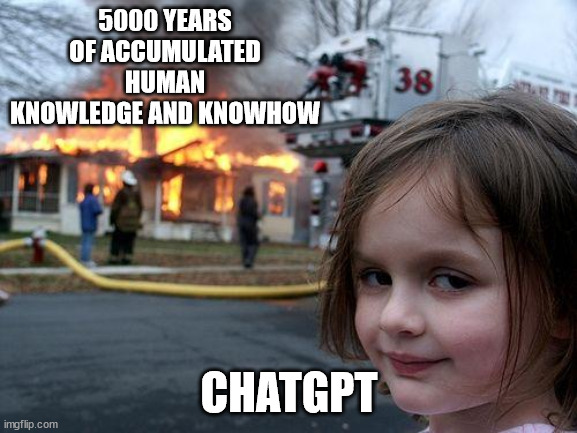Ever heard of the term ‘human-centered AI’? It means focusing on enhancing and amplifying human capabilities with AI rather than displacing them. Let us try to think of AI’s influence on our jobs this way because this is the good, and hopefully, the true scenario. When thought like that, AI is not a replacement for human efforts but a collaborative partner that evolves and improves through continuous human input.
Human-centered AI strives for a symbiotic relationship where artificial intelligence and, good old human intelligence coexist, each playing to their strengths. It’s not about machines doing things independently, but rather about them supporting and augmenting human activities.
More Info: AI vs. Human Creativity in the World of Copyright
At its core, human-centered AI is defined by systems that are perpetually improving due to human interaction, and as a result of that, offering an effective collaboration between humans and machines. By developing machine intelligence to understand human language, emotion, and behavior, this approach takes things to the next level, showing us what can be achieved with AI solutions. In business, it translates into leveraging human science and qualitatively rich data to deeply understand customer behaviors and needs. The result is more personalized and effective customer experiences. So, everybody is happy.
Human-centered AI can change the way we view and interact with artificial intelligence. Harnessing AI to enhance and augment human abilities, ensures that machines work for us, not against us. So, less HAL9000 from 2001: A Space Odyssey and more R2-D2 from Star Wars.
AI Will (Not) Take Our Jobs
You are both right and wrong about your fears of AI taking your job. A little bit of skepticism is never harmful. The rapid development of AI and its integration into various industries inevitably led to concerns about job displacement. However, we should fight this fear, and understanding and addressing it is the recipe. How? Through local adoption and reskilling we can transform this challenge into an opportunity for growth and innovation.
What do we mean by that? Local adoption of AI refers to the implementation of AI technologies in a manner that is sensitive to the specific needs, contexts, and characteristics of local job markets and industries. To put it simply, tailoring AI solutions to enhance, rather than replace, the existing workforce. By focusing on local needs and contexts, businesses and governments can create AI strategies that are more inclusive, sustainable, and beneficial to the local economy.
The concept of reskilling, on the other hand, emerges as a crucial response to the job displacement fears associated with AI. Reskilling involves providing training and education to equip the current workforce with new skills that are relevant in the evolving job landscape dominated by AI. This approach is essential for roles that involve routine tasks and predictable decision-making, which are more susceptible to automation.
Sure, there will be some resistance before complete adoption, but guess who is great for routine tasks? AI can automate routine tasks across various sectors such as manufacturing, transportation, customer service, and data analysis. Naturally, with such automation comes a shift in the skill sets required for many jobs. Reskilling initiatives help workers adapt to these new requirements. We need to learn how to co-exist with AI, it’s not vice versa.
The Stitch Fix Story: A Case Study
We have a great real-life example of using AI to make a job easier and more efficient. Yes, many companies are starting to develop their AI strategies, but there is one example that is mature enough to observe long-term outcomes. Meet Stitch Fix, a personal-style service company that achieved the perfect synergy between humans and AI. Artificial intelligence and ML (Machine Learning) models form the backbone of their operations, allowing automated personalization in client styling, logistics, inventory management, and product design.
Generative AI has become the game changer for Stitch Fix thanks to its capability of generating original content after extensive training on large datasets. It automates time-consuming tasks, allowing humans to concentrate on areas where judgment and creativity are crucial, such as client relationships and understanding customized style requests.
Key Applications of Generative AI at Stitch Fix
Stitch Fix is leveraging embeddings from prominent language models, like OpenAI’s GPT-4, to better interpret client feedback. Such models are pre-trained on extensive data, over and over again, utilizing numerical representations of text (embeddings) to grasp the meaning and relationships of words and sentences. Integrating the said embeddings into Stitch Fix’s deep learning algorithms has opened up new horizons in client feedback interpretation, making the process faster, and leaving more time for humans to fine-tune the operation.
GPT-3 is also used by Stitch Fix and played a key role in their transformation. in the advertising process. The AI-provided original copy, based on style keywords or product attributes, is now standard for Stitch Fix’s online ads. This AI involvement has significantly reduced the time taken for copywriters to review and approve ad content. On top of that, high-quality copy was achieved thanks to the comprehensive training of the tool. They literally trained GPT-3 like a copywriter intern in an agency. So much work for so little money!
Another crucial part of retail is product descriptions that provide clients with essential information about items. Stitch Fix trained GPT-3 on existing product descriptions and client feedback and enabled the AI to generate informative descriptions in a short time span. This process enhanced the efficiency of creating product descriptions while also ensuring the deadlines were met.
For Stitch Fix stylists, understanding client preferences is essential. Using GPT-4, Stitch Fix can distill extensive client feedback and allow their stylists to quickly grasp and accommodate individual style preferences and needs.
Stitch Fix continues to experiment with generative AI. Exploring its potential to understand fashion trends and deepening the stylist-client connection will certainly continue to make a difference for them, and will make a great example of harmony between humans and AI in the context of retail.
From Automation to Revenue Growth
The transformative potential of AI extends from automation to revenue growth. AI’s impact on revenue is seen in marketing and sales, product and service development, and service operations. For instance, knowledge-based industries like banking, pharmaceuticals, and education are expected to see significant revenue boosts, with tech companies potentially adding value equivalent to 9% of global industry revenue.
This transformation showcases the transition from AI as a cost-saving tool to a revenue-generating powerhouse. The ability of AI to drive top-line gains rather than just reducing costs is a key factor in this transition. Building entire business models on AI is not a futuristic dream, it seems. Because already, high-performing AI organizations are focusing less on cost reduction and more on creating new businesses or enhancing existing offerings with AI-based features.
Rethinking Roles with AI as a Copilot
Integrating AI into various professional roles made us rethink these roles on a fundamental level. AI acts as a copilot, enhancing human capabilities and reshaping professional identities. Organizations that effectively leverage AI often see enhanced productivity in risk modeling, performance management, and optimizing workforce deployment. The key is to maintain a balance where AI complements human expertise rather than replaces it, leading to a more efficient and creative workforce. High-performing AI organizations are particularly adept at utilizing AI across multiple business functions, indicating a more comprehensive integration of AI into the workforce.
For instance, in healthcare, AI can monitor patients to prevent falls, or in law firms and research labs, it can sift through vast amounts of data, allowing humans to focus on more complex tasks. This is a win-win situation, where AI enables human jobs to be performed faster and more efficiently, without taking away the human element.
The role of AI in augmenting human capabilities is evident in its application across various sectors. For example, IBM’s SCORE system uses AI to optimize sales processes by learning from sales data and operational feedback, enhancing business performance and decision-making.
Evaluating Impact and Ensuring Fair Compensation
In this new world, ensuring fair compensation for human contributions becomes more than just a nice-to-have thing. Addressing bias and ensuring fair compensation is critical in the AI-augmented workplace, not just to keep the peace, but to tackle the beast of wage inequality head-on.
While AI’s potential to revamp entire industries is clear, it’s not all smooth sailing. The threats of inaccuracy, cybersecurity breaches, and regulatory compliance are real risks that need some serious navigating. An ideal high-performing AI organization isn’t supposed to be good at crunching numbers only; they also must be savvy in mitigating these risks with strategies like data governance and standardized processes, making sure everyone’s on the same page.
Final Words
The integration of AI into business practices isn’t just about turning robots into assistants and cost-cutters. Nope, it’s more like giving them a seat at the revenue generation and teaching them the fine art of enhancing human work. As AI struts its stuff across various industries, the focus isn’t just on making machines smarter, but on making humans look like geniuses.
Read More:
- AI Hunts Down 95K ‘Free Giveaway’ Scams on Twitter
- AI and Blockchain: A Symbiotic Love Affair in Gaming!
- Brainoware: The Marriage of Human Brain Cells and AI
The cool cats in high-performing AI organizations are already riding this wave, showing us that AI can do more than just scare people with job-takeover nightmares. It can pump up business operations and sprinkle growth magic everywhere. The secret sauce? A balanced approach that utilizes AI’s potential with good old-fashioned human values.
Disclaimer: All materials on this site are for informational purposes only. None of the material should be interpreted as investment advice. Please note that despite the nature of much of the material created and hosted on this website, HODL.FM is not a financial reference resource and the opinions of authors and other contributors are their own and should not be taken as financial advice. If you require advice of this sort, HODL.FM strongly recommends contacting a qualified industry professional.








